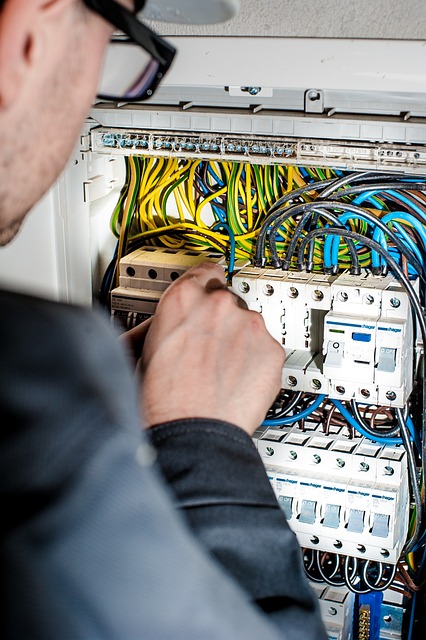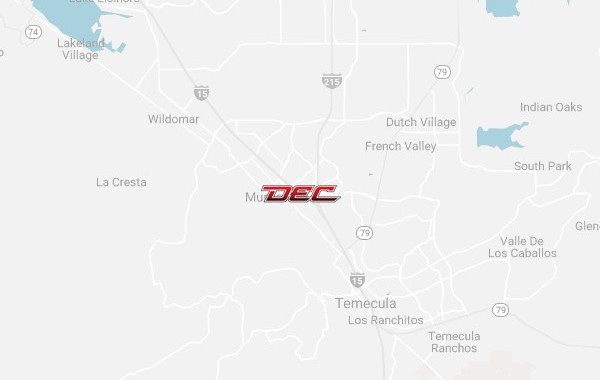Ev Charger Installation in Lake Elsinore, CA
Inland Empire's #1 Rated EV Charger Installer
Over 550+ Five Star Reviews On Google, Facebook & Yelp!
EV Charger Installation in Lake Elsinore, CA, And Surrounding Areas
Is your property in Lake Elsinore prepared to adapt to the future of transportation with our network of 62 public charging station ports, offering Level 2 and Level 3 charging options within a 15km radius? As a responsible homeowner or business owner, considering EV charger installation is a step towards sustainable living and a strategic response to the growing demand for electric vehicles in Lake Elsinore, CA. Join the green movement with Direct Electric Company, your reliable local electrical services provider. Contact us now to schedule a consultation and take the first step towards a greener future with us.
Navigating the EV Charge: Your Practical Guide to Charger Choices
Electric Vehicle (EV) charging is a nuanced process, and Direct Electric Company aims to provide you with clear insights into the practicalities of the EV charging landscape. Let’s take a look at the EV charging process, exploring various charger types and options to help you make an informed decision.

Types of EV Charging
- Level 1 Charging: Home Convenience
Level 1 charging offers a simple solution for residential settings. This involves using a standard household electrical outlet (120-volt) to charge your electric vehicle. Although it’s the slowest option, Level 1 charging is practical for overnight charging at home, ensuring your EV is ready for use each morning. - Level 2 Charging: Efficient Home and Business Charging
Level 2 charging comes into play when efficiency is a priority. Level 2 chargers with a 240-volt electrical supply significantly reduce charging times compared to Level 1. We offer a range of Level 2 chargers suitable for residential and commercial use, providing a versatile and efficient solution. - Level 3 Charging: High-Speed Charging for Businesses
Businesses aiming to accommodate a high volume of electric vehicle users opt for Level 3 charging, also known as DC fast charging. This high-speed option uses a direct current (DC) power supply and can charge an EV much faster than Level 1 and Level 2 options. We specialize in installing Level 3 chargers, ideal for commercial spaces, retail centers, and public charging stations.
Charger Options
- Wall-Mounted vs. Pedestal
In addition to charging levels, the physical design of chargers varies. Wall-mounted chargers are space-efficient and suitable for residential garages. In contrast, with their standalone structure, pedestal chargers are ideal for commercial settings, parking lots, or areas where a freestanding solution is preferred. - Innovative Charging Features: Convenience at Your Fingertips
Direct Electric Company takes a practical approach by offering innovative charging solutions. These chargers have advanced features such as scheduling, remote monitoring, and smartphone connectivity. Smart chargers enhance user convenience and also contribute to more efficient energy usage.
Ready to make the switch to electric? Let Direct Electric Company be your practical partner in this transformative journey.
From Consultation to Connection: Our Lake Elsinore, CA Services
Direct Electric Company believes that a successful EV charger installation journey begins with a comprehensive consultation tailored to your needs. Our commitment to providing top-notch services extends from the initial discussion to the final connection, ensuring a seamless and stress-free experience for our valued clients in Lake Elsinore, CA.
- Personalized Consultation: Our process starts with a customized consultation where our skilled team of experts takes the time to understand your requirements. Whether you’re a homeowner, business owner, or property manager, we delve into the specifics of your property, electrical capacity, and expectations. This initial step sets the foundation for a customized solution aligning with your goals.
- Site Assessment and Planning: Understanding that every property is distinct, our experts conduct a thorough site assessment. This involves evaluating the electrical infrastructure, property layout, and specific considerations for an efficient and code-compliant installation. Our meticulous planning phase ensures the proposed solution integrates seamlessly with your property’s existing electrical system.
- Regulatory Compliance and Permits: Navigating the regulatory landscape for EV charger installations can be complex. That’s where Direct Electric Company excels. We take care of obtaining all the necessary permits, ensuring compliance with local regulations, and addressing any specific requirements to Lake Elsinore, CA. Our team handles the paperwork so you can focus on the excitement of going green.
- Transparent Cost Estimation: We believe in transparency throughout the entire process, especially regarding costs. We provide a detailed and transparent cost estimation that includes all aspects of the installation process. We ensure that you clearly understand equipment costs to labor and any additional materials of the investment required for your EV charger installation.
- Efficient Installation Process: Our skilled technicians act once the planning and paperwork are in order. With a focus on safety and precision, we execute the installation efficiently. From mounting the charging unit to connecting it to the power source, our team ensures that the entire process is carried out seamlessly and in accordance with industry standards.
- Testing and Quality Assurance: We conduct rigorous testing to ensure that the installed EV charger functions optimally before handing over the reins to you. Our commitment to quality assurance means that every connection is secure and the charger is ready for use. We take pride in delivering installations that stand the test of time.
- Client Orientation and Training: We provide comprehensive training to guarantee a smooth transition to your new EV charging solution. We walk you through the operation of the charging unit, answer any questions you may have, and ensure that you feel confident in utilizing the system effectively.
- Ongoing Support and Maintenance: Our commitment to your satisfaction extends beyond the installation. We offer continuing support and maintenance services to address any issues promptly. We stand by the quality of our work with a 1-year quality warranty, providing you with peace of mind for the long term.
Embark on your journey to sustainable driving with Direct Electric Company, where every step from consultation to connection is marked by professionalism, attention to detail, and a commitment to delivering outstanding EV charger installation services in Lake Elsinore, CA.
Local Excellence: Enhancing Lake Elsinore, CA with Direct Electric's Expertise
Our commitment to being locally owned and operated defines our connection to the Lake Elsinore, CA, community. Our approach to EV charger installation is rooted in a practical understanding of our city’s needs. Our local expertise ensures tailored solutions, whether for a residence or a business, considering architectural nuances, electrical capacity, and aesthetic preferences.
Our status as a locally owned business translates into efficient and timely services. Proximity to Lake Elsinore means quicker response times, allowing us to complete your EV charger installation promptly and with ease.
We’re not just providing a service; we’re your neighbors, ready to enhance your property with sustainable solutions that seamlessly integrate into the character of our community. Choose Direct Electric Company for an EV charger installation experience that reflects our dedication to enhancing Lake Elsinore, CA, with local expertise.
Power Up with Direct Electric: Your Journey to Sustainable Driving Starts Here
Ready to take the first step toward sustainable driving? Direct Electric Company is your trusted partner in turning your property into a hub for sustainable driving. Ready to take the first step toward sustainable driving? Our decade-long expertise, commitment to safety, and innovative solutions make us the ideal choice for EV charger installation in Lake Elsinore, CA. Take advantage of the opportunity to be a part of the green revolution! Join us, and let’s transform your space into a haven for electric vehicles.
Contact us to schedule a consultation and embark on your journey to a greener, more eco-friendly future with us. Your EV charger installation awaits – power up today!





